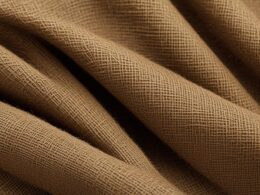Clover can be a frustrating problem for homeowners who want a uniform, grassy lawn. But fear not, there are effective methods to get rid of clover without damaging your precious turf. In this article, we will explore seven proven strategies to regain control over your lawn and achieve a clover-free yard.
Key Takeaways:
- Manual removal is a simple and natural way to eliminate clover from your lawn.
- A vinegar-based mixture can effectively kill clover without harming the surrounding grass.
- Boosting nitrogen levels in the soil can deter the growth and spread of clover.
- Using an herbicide like A.D.I.O.S. and adjusting mowing height can target clover while preserving your grass.
- Corn gluten can be an organic preventative measure, while smothering is an option for eliminating existing clover patches.
Manual Removal
If you’re looking for a simple and natural way to get rid of clover, manual removal is the way to go. This method involves physically removing clover from the ground by hand. Here’s how you can do it:
- Start by using a spade or small garden shovel to loosen the soil around the clover patches.
- Gently grasp the clover plant at its base and pull it out, ensuring that you remove all of its roots.
- Repeat this process for each clover patch in your lawn, focusing on small areas at a time.
Manual removal works particularly well for small patches of clover and can be an easy DIY solution. It allows you to remove the clover without the use of chemicals or herbicides, making it a natural option for clover removal.
Vinegar Mixture
Looking for a natural and organic way to control clover in your lawn? Consider using a vinegar-based mixture as a weed killer. This method is effective and requires only a few household ingredients and regular spraying over a couple of weeks.
To create the vinegar-based mixture, you’ll need:
- One cup of vinegar
- One cup of water
- One drop of dish soap
Combine these ingredients in a spray bottle and mix them well.
When spraying the mixture onto the clover patches, be sure to avoid spraying the surrounding grass. The vinegar acts as a drying agent, effectively killing the clover leaves. Over time, this will help eliminate the plants.
Remember: It’s important to reseed the area with grass seed after the clover has been eliminated to promote new growth and maintain a healthy lawn.
Implementing natural clover control methods, such as this vinegar mixture, can be a safe and environmentally friendly way to maintain a clover-free yard. Stay tuned for more organic weed control techniques in the upcoming sections.
Nitrogen Boost
Clover thrives in soil with low levels of nitrogen. By applying a nitrogen-rich fertilizer to the clover patches, you can deter its growth and spread. Fast-release fertilizers are a quick and affordable option, while organic fertilizers like cow manure, bone meal, liquid kelp, blood meal, guano, and earthworm castings are better for the environment but slower to kill the clover. Apply the fertilizer specifically to the problem areas affected by clover and find these fertilizers at garden and home-improvement stores.
Herbicides and Mowing Height
If you want to eliminate clover without harming the surrounding grass, using an herbicide like A.D.I.O.S. is a targeted approach worth considering. A.D.I.O.S. is an effective organic herbicide that kills clover and other weeds while keeping your grass intact.
Adjusting your mowing height is another strategy to discourage clover growth and promote a healthier lawn. Clover tends to thrive in areas where the grass is less than three inches high. By raising your mower setting to three inches or higher, you can help your grass outcompete the clover, creating an environment where grass has the advantage.
By utilizing herbicides like A.D.I.O.S. and adjusting your mowing height, you can effectively combat clover while maintaining a strong, competitive grass cover in your lawn.
Corn Gluten and Smothering
To prevent the growth and spread of clover, consider utilizing corn gluten. This natural method hinders clover seed sprouting without harming your existing grass. Simply spread 20 pounds of corn gluten meal per 1,000 square feet of your clover-infested lawn. After applying, water the area and allow it to dry. Corn gluten acts as a natural weed pre-emergent, inhibiting the germination of clover seeds.
An alternative approach to eliminate clover is by smothering it. Begin by covering the clover patches with a sturdy garbage bag or plastic sheet. Ensure the edges are secured with bricks or rocks to prevent any air or light from reaching the clover. After a few weeks, remove the covering and reseed the area with grass seeds. This method effectively eradicates clover while allowing your grass to thrive.
Preventing Clover with Corn Gluten
- Spread 20 pounds of corn gluten meal per 1,000 square feet on your clover-infested lawn.
- Water the area after applying the corn gluten.
- Allow the corn gluten to dry.
- Enjoy a clover-free lawn as the corn gluten prevents clover seed sprouting.
Smothering Method for Clover Elimination
- Cover the clover patches with a garbage bag or plastic sheet.
- Secure the edges with bricks or rocks.
- Leave the cover in place for a few weeks.
- Remove the covering and reseed the area with grass seeds.
- Admire your clover-free lawn.
Will following the care tips for Dutch White Clover help in getting rid of clover in my lawn?
Following the care tips for Dutch White Clover can actually help in getting rid of clover in your lawn. The benefits of Dutch White Clover includes its ability to outcompete other weeds, adding nitrogen to the soil, and improving soil health. Proper maintenance can lead to a healthier and clover-free lawn.
Conclusion
Eliminating clover from your lawn can be a challenging task, but it is achievable with the right techniques and strategies. By implementing a combination of methods such as manual removal, vinegar mixture, nitrogen boost, herbicides, adjusting mowing height, using corn gluten, and smothering, you can effectively eradicate clover and maintain a clover-free yard.
Manual removal is a natural and straightforward approach for small clover patches, while a vinegar mixture provides an organic and environmentally friendly solution. Boosting nitrogen levels in your soil through fertilizers not only deters clover growth but also promotes the health and competitiveness of your grass. Herbicides like A.D.I.O.S. and proper mowing height adjustments can target clover without harming your grass, ensuring a lush and clover-free lawn.
If you prefer preventative methods, using corn gluten can inhibit the germination of clover seeds while leaving your existing grass undamaged. Alternatively, smothering clover patches with a cover prevents them from receiving sunlight and eventually eliminates them. Choose the method that suits your preferences and lawn care needs, and reclaim control over your lawn by saying goodbye to clover.











